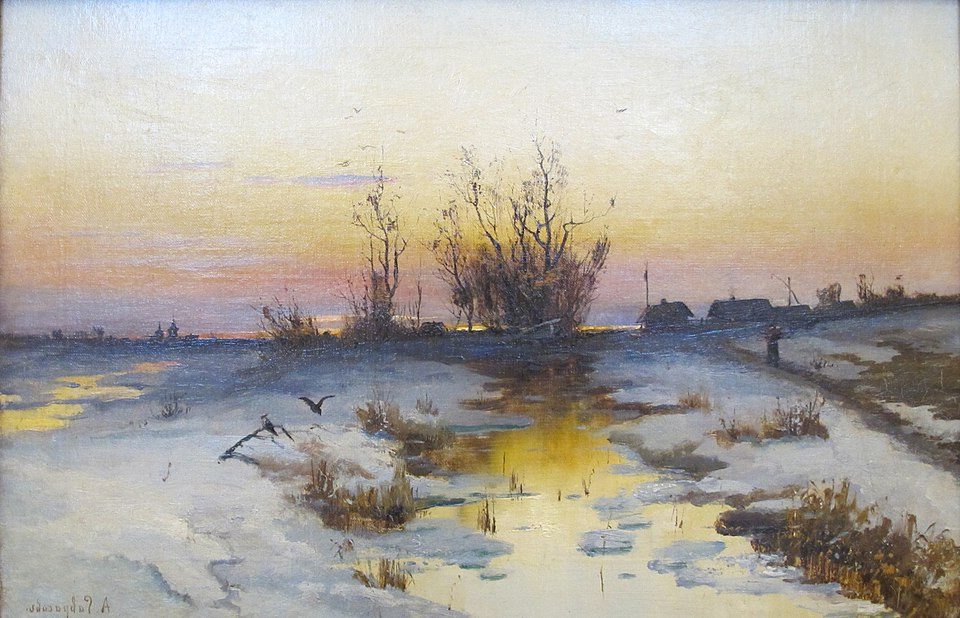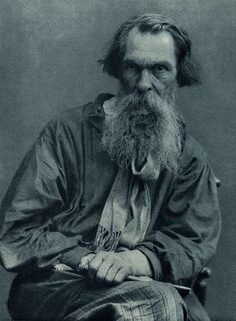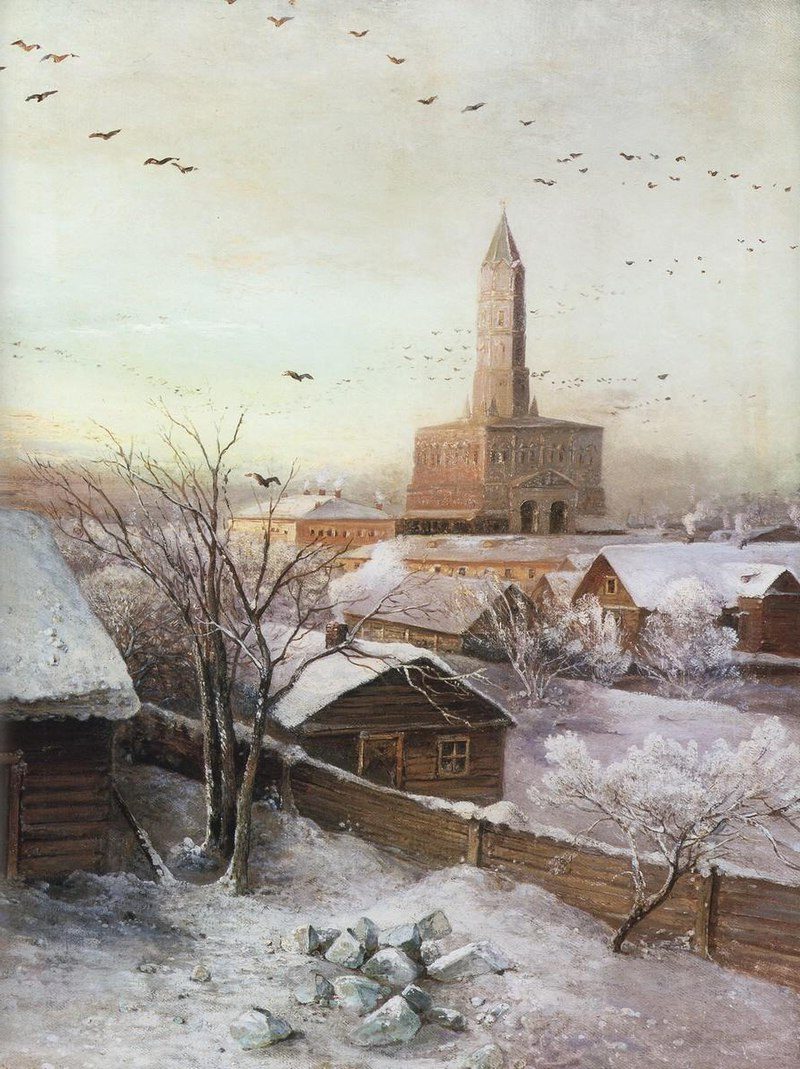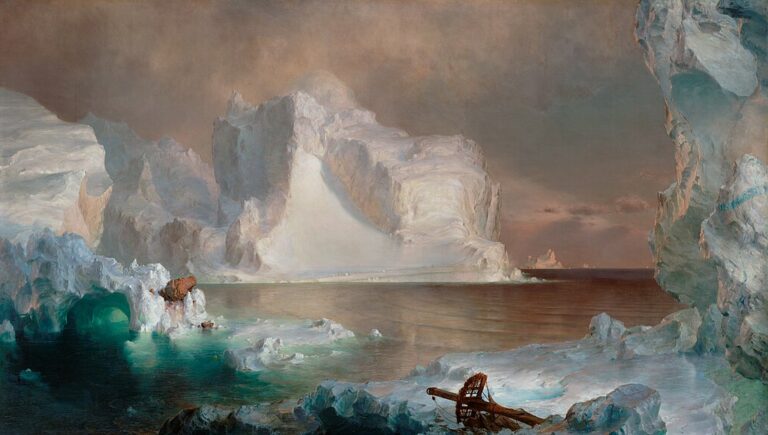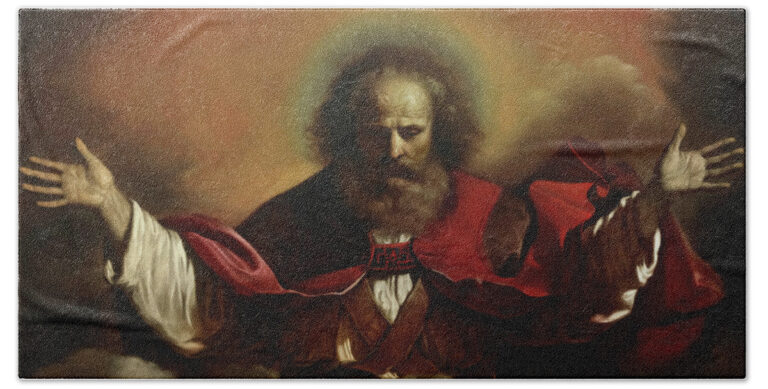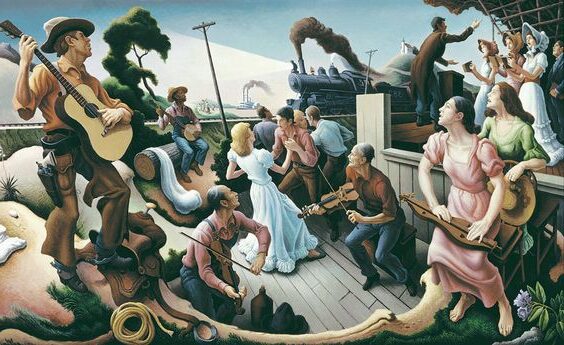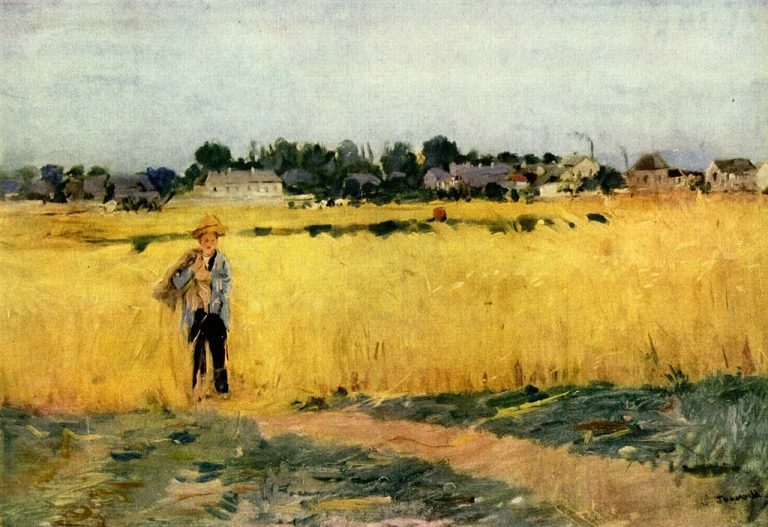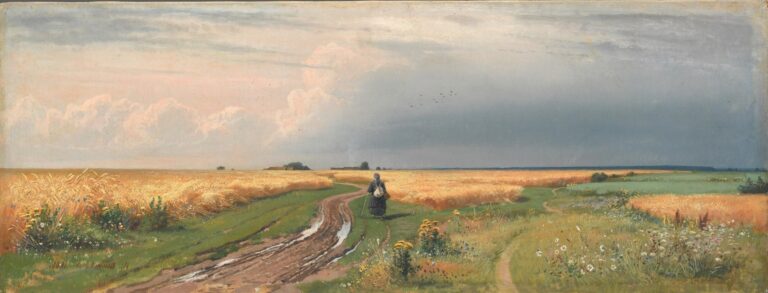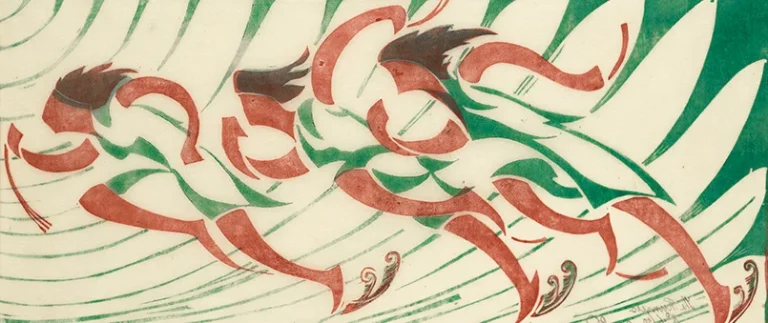Alexei Savrasov Painter: The Master of Russian Landscape Art
Born: 24 May 1830, Moscow, Russian Empire
Death: 8 October 1897, Moscow, Russian Empire
Art Movement: Realism, Peredvizhniki
Nationality: Russian
Teacher: Karl Rabus
Institution: Moscow School of Painting, Sculpture and Architecture
Alexei Savrasov Painter: The Master of Russian Landscape Art
Early Life and Education
Alexei Kondratyevich Savrasov was born in 1830 as the son of a Moscow merchant. His artistic talents emerged early, setting the foundation for his future career as one of Russia’s notable landscape painters.
Formative Years in Moscow
Savrasov spent his childhood in Moscow’s Zamoskvorechye district, immersed in the merchant class environment. By the age of twelve, he had already developed impressive drawing skills entirely through self-teaching.
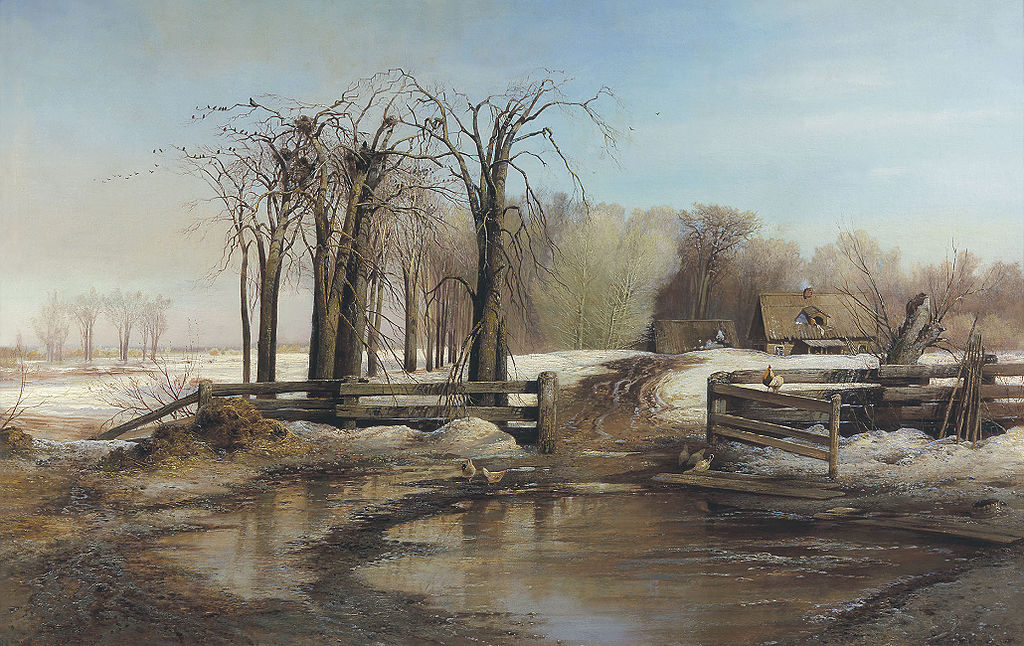
Spring Day, 1873, by Alexei Savrasov
Without formal training at this stage, young Alexei created simple romantic scenes that were popular during that period.
His early artistic inclinations faced opposition from his father, who envisioned a different path for his son. Despite this challenge, Savrasov’s natural talent couldn’t be suppressed.
The urban and rural landscapes around Moscow provided rich visual inspiration for the young artist. These early impressions of nature would later influence his distinctive approach to landscape painting.
Training at the Moscow School of Painting and Sculpture
In 1844, Savrasov enrolled at the Moscow School of Painting, Sculpture and Architecture, marking the beginning of his formal artistic education. He studied there for ten years, until 1854, receiving structured training in various artistic techniques.
During his studies, he came under the tutelage of Professor Karl Rabus, an established landscape painter who recognized Savrasov’s potential. This mentorship proved crucial in developing his technical skills and artistic vision.
The school’s curriculum exposed Savrasov to both classical traditions and contemporary trends in landscape painting. His training emphasized accurate observation combined with emotional response to nature.
By graduation, Savrasov had transformed from a self-taught talent to a disciplined artist with strong technical foundations. His post-graduation works revealed his early Romantic influences while hinting at the lyrical style he would later develop.
Artistic Development and Style
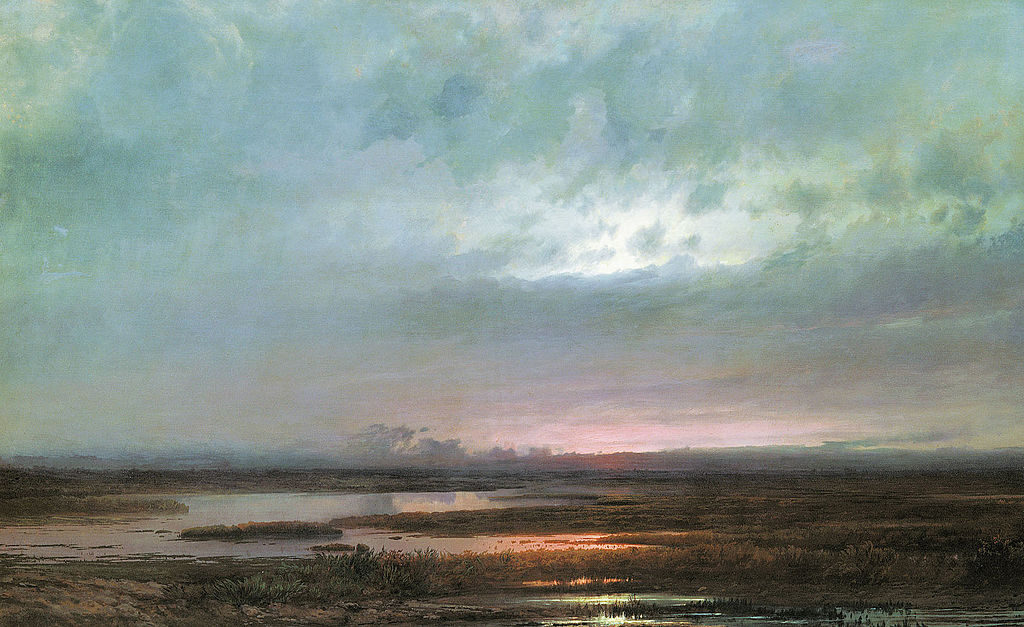
Sundown over a Marsh, 1871, by Alexei Savrasov
Savrasov’s artistic journey transformed Russian landscape painting through his emotional connection to nature and technical mastery. His work evolved from academic traditions to a deeply personal style that captured the soul of the Russian countryside.
Influence of Romanticism and Western Artists
Savrasov’s early artistic development was shaped by European Romantic traditions. He studied the works of John Constable and Alexandre Calame, whose emotional approaches to landscape painting resonated with his own sensibilities.
During his travels across Europe in the 1860s, Savrasov absorbed techniques from Western artists while maintaining his distinct Russian perspective. These influences helped him move beyond the strict academic standards of his early training.
Unlike many contemporaries who focused on dramatic scenery, Savrasov found beauty in modest rural scenes. He combined Western technical approaches with an intimate understanding of Russian nature, creating a unique artistic voice.
Birth of the Lyrical Landscape Genre
Savrasov pioneered the “lyrical landscape” in Russian art during the 1870s. This innovative approach emphasized emotional connection rather than mere topographical accuracy.
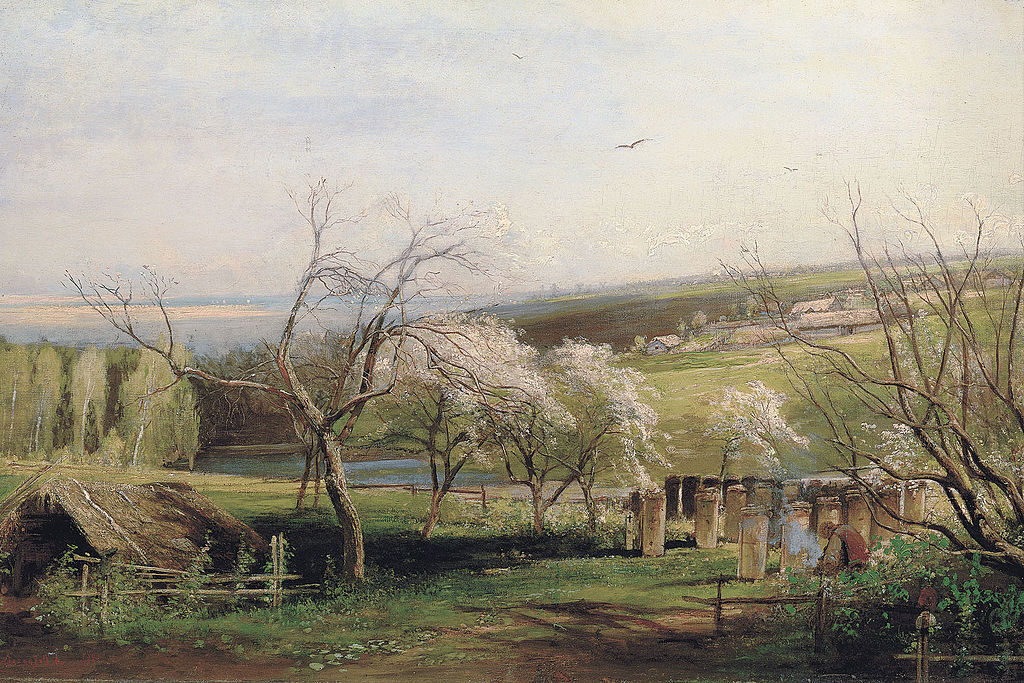
Rustic View, 1867, by Alexei Savrasov
His landscapes captured not just the physical appearance of nature but its mood and spiritual essence. Savrasov believed a true landscape should evoke feelings and memories in viewers, creating a poetic dialogue between art and audience.
The lyrical landscape style reflected Savrasov’s deep bond with Russian countryside. He depicted modest scenes – thawing snow, country roads, and village outskirts – with remarkable emotional depth. His paintings revealed beauty in ordinary moments, often featuring delicate transitions between seasons.
Major Works and Artistic Milestones
“The Rooks Have Returned” (1871) stands as Savrasov’s masterpiece and the defining work of Russian lyrical landscape painting. This seemingly simple scene of birds returning in early spring captured the essence of Russian nature and national identity.
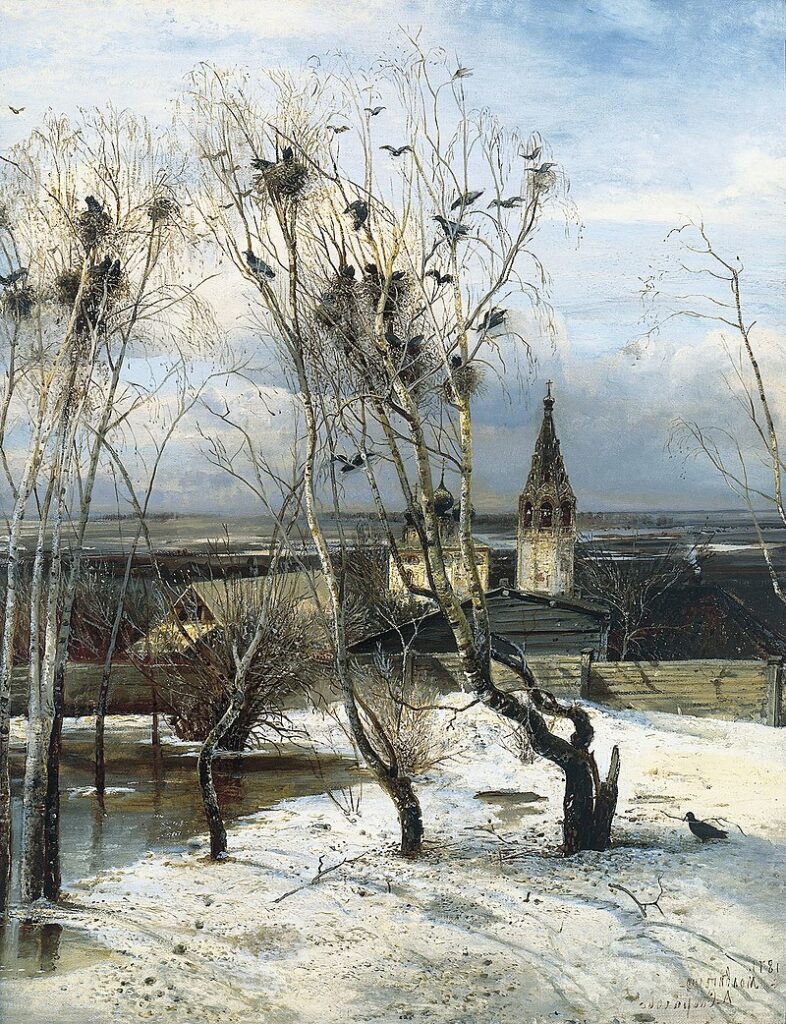
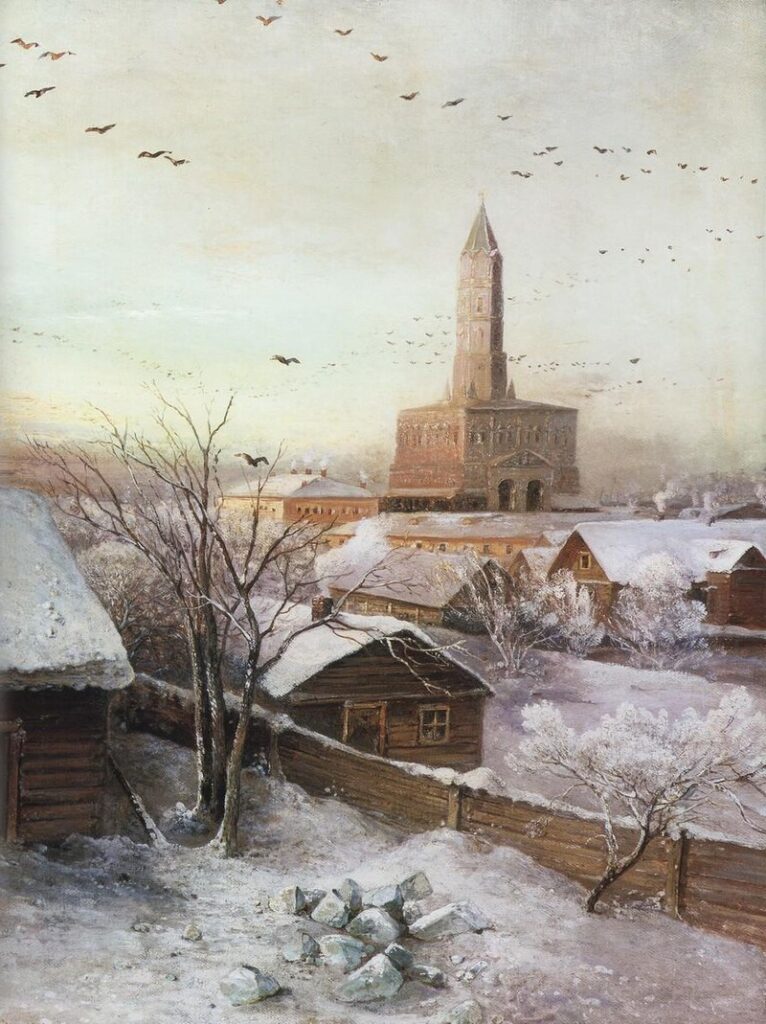
Savrasov’s artistic technique evolved throughout his career. His early works showed academic precision, while his mature paintings featured looser brushwork and subtle color relationships that conveyed atmospheric conditions masterfully.
Other significant works include “Country Road” (1873), “The Rainbow” (1875), and “Spring Day” (1873). These paintings demonstrate his ability to transform ordinary rural scenes into powerful emotional statements through careful observation of light, weather, and seasonal changes.
Savrasov’s innovation lay in creating “mood landscapes” that expressed the soul of Russia through its natural environment. His work inspired generations of Russian artists who continued developing the lyrical landscape tradition.
Career Highlights and Legacy
Alexei Savrasov’s career spanned several decades during which he created masterpieces that defined Russian landscape painting. His artistic journey included notable patrons, membership in influential art movements, and mentoring artists who would become legends in their own right.
Notable Exhibitions and Patrons
Savrasov gained significant recognition in the 1850s as one of Russia’s leading landscape painters. His early success attracted the attention of important patrons, including Grand Duchess Maria Nikolayevna, who appreciated his authentic depictions of Russian nature.
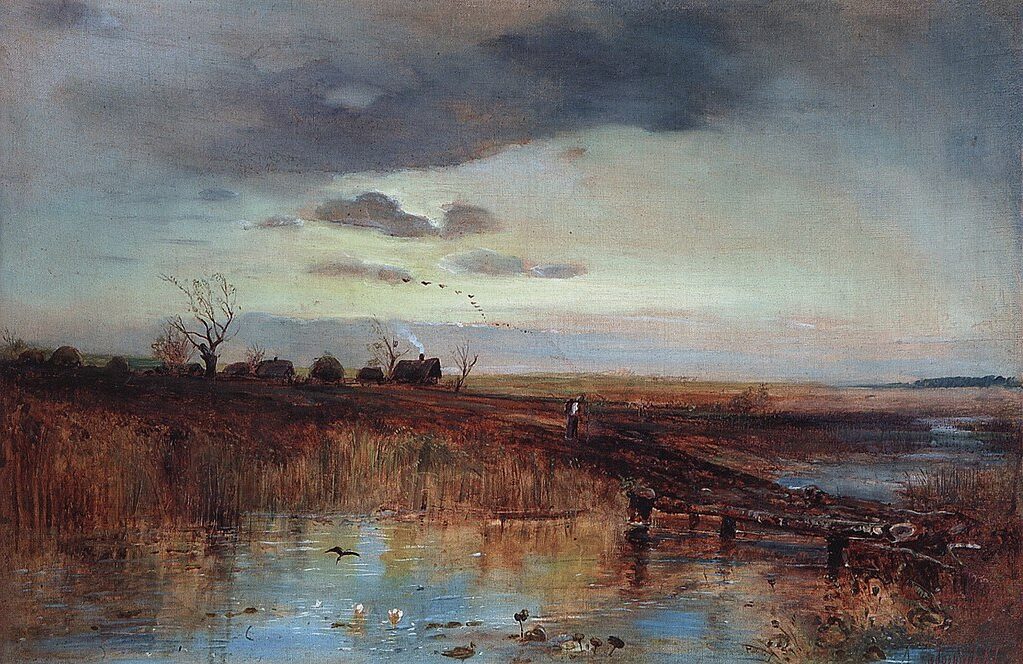
Autumn Village, 1870s, by Alexei Savrasov
In 1871, Savrasov exhibited his most celebrated work, “The Rooks Have Come Back,” at the first Peredvizhniki exhibition. This painting captured the subtle beauty of early spring in the Russian countryside and immediately established him as a master of the lyrical landscape.
Pavel Tretyakov, the famous art collector and founder of the Tretyakov Gallery, became an important patron and acquired several of Savrasov’s works. These paintings, including “Volga Near Yuryevets,” now form an essential part of the gallery’s collection.
The Peredvizhniki Group and Savrasov’s Impact
Savrasov was a founding member of the Peredvizhniki (The Wanderers), a group of Russian realist artists who rebelled against academic restrictions. This association profoundly shaped his artistic direction in the 1870s.
Within the group, Savrasov collaborated with other prominent artists like Vasily Perov. His focus on authentic Russian landscapes aligned perfectly with the Peredvizhniki’s mission to capture the soul of Russia in their art.
Savrasov’s works stood out for their emotional depth and poetic quality. Unlike his contemporaries who often focused on dramatic scenes, he found profound meaning in seemingly ordinary rural settings, elevating simple motifs to expressions of deep national sentiment.
Savrasov’s Disciples and Influence on Russian Art
At the Moscow School of Painting, Sculpture and Architecture, Savrasov mentored several students who became prominent artists. Most notably, Isaac Levitan, who would continue and develop Savrasov’s lyrical landscape tradition.
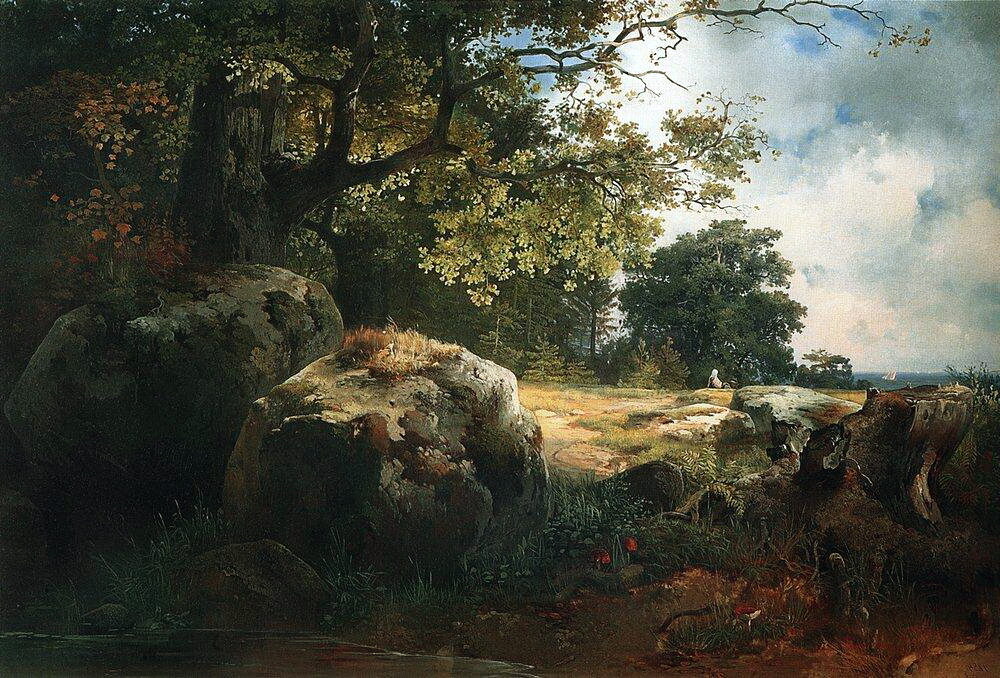
View in the Neighborhood of Oranienbaum, 1854
Konstantin Korovin, another celebrated student, acknowledged Savrasov’s profound influence on his artistic development. Savrasov taught his students to observe nature carefully and find beauty in its simplest manifestations.
His innovative approach to landscape painting created what art historians now recognize as the “lyrical landscape” style in Russian art. This style emphasized emotional connection to nature rather than mere technical reproduction.
Even after his personal decline in the late 1870s, Savrasov’s artistic vision continued to shape Russian landscape painting through his students and admirers, cementing his legacy as one of Russia’s most influential artists.
Frequently Asked Questions
Alexei Savrasov established himself as a pivotal figure in Russian art history through his distinctive approach to landscape painting. His works captured the essence of Russian countryside with remarkable sensitivity and emotional depth.
What are the defining characteristics of Alexei Savrasov’s painting style?
Savrasov created the “lyrical landscape” style in Russian painting. His work featured emotional connections to nature rather than just visual accuracy.
He often depicted simple rural scenes with remarkable sensitivity and attention to light, atmosphere, and seasonal changes.
Savrasov’s paintings commonly included delicate color palettes that captured the subtle beauty of the Russian countryside. His unique ability to convey mood through natural elements defined his artistic approach.
Which artworks is Alexei Savrasov best known for?
“The Rooks Have Returned” (1871) stands as Savrasov’s most celebrated work. This painting depicts birds returning in early spring, symbolizing renewal and hope.
His portfolio includes other notable works created during trips to the Volga region in the early 1870s, when his artistic vision expanded considerably.
Savrasov’s landscapes captured ordinary Russian scenes with extraordinary emotional depth. His paintings transformed humble rural settings into poetic visual experiences.
How did Alexei Savrasov contribute to the development of Russian landscape art?
Savrasov founded the lyrical landscape tradition in Russian art, moving away from academic formalism toward emotional expressiveness in nature scenes.
As an academician, he influenced younger generations of Russian painters through both his artwork and teaching. His approach helped establish landscape as a respected genre in Russian art.
Savrasov elevated the Russian countryside as a worthy artistic subject. He revealed the profound beauty in ordinary rural scenes that previous artists had often overlooked.
What influence did the Russian landscape have on the works of Alexei Savrasov?
The distinctive qualities of Russian nature—its vast expanses, seasonal changes, and unique light—deeply shaped Savrasov’s artistic vision.
His frequent trips to rural provinces, particularly the Volga region, provided inspiration for many of his most significant works. These journeys allowed him to capture authentic Russian landscapes.
Savrasov’s emotional connection to his homeland infused his paintings with genuine feeling. He portrayed not just the physical landscape but its spiritual essence.
Can you describe the historical context in which Alexei Savrasov was working?
Savrasov painted during a period of significant change in Russia during the 19th century. His career spanned an era of growing national identity in Russian culture and art.
The 1860s-1870s marked a shift away from academic traditions toward more authentic representations of Russian life. Savrasov’s work aligned with broader cultural movements seeking to capture Russia’s unique character.
His 1862 trip abroad expanded his artistic perspective. This international exposure influenced his approach while reinforcing his commitment to Russian subjects.
How has Alexei Savrasov’s legacy influenced contemporary artists?
Savrasov’s emotional approach to landscape painting continues to inspire artists. He is especially influential to those interested in connecting viewers with natural environments. His techniques for conveying mood through atmosphere remain relevant.
His elevation of ordinary scenes to poetic status influenced generations of landscape painters. Contemporary artists still study his ability to reveal beauty in seemingly simple settings.
The lyrical landscape tradition he established remains an important reference point in Russian art history. His work bridges traditional techniques with emotional expressiveness that resonates with modern audiences.

